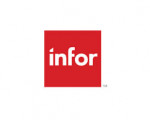To decrease costs and improve patient care, health IT solutions must have access to reliable, near-real time data from across the health system. There is an incredible amount of data buried in the many silos of clinical systems in health systems today. IDC Health Insights estimates more than 25,000 petabytes of health data will be created by 2020.
That data is most often a mass of unintelligible bits and bytes today. However, with the right tools it can provide a wealth of unique insights into better patient care and in-hospital workflow. Most IT administrators are not able to gain those insights because the systems creating that data aren’t integrated. Different systems create different types of data, in different languages and terminologies, in completely disconnected environments.
To make the most of disparate data, “health systems must create a foundation of swiftly flowing normalized health information,” Joel Rydbeck, Director of Healthcare Technology and Strategy at Infor, explained. “You must get every system speaking to each other, and do it fast.” This means translating terminology, codes, protocols, data structures, and other format differences between systems.
“That’s what Infor does for over 2,500 health providers around the world. We translate and connect information from these systems,” he said. “We make it so that inpatient EMR #1 can speak one language and ambulatory EMR #2 can speak a different language, and yet these two systems can now have a meaningful exchange of your patient data in real-time.”
That data translation allows users to pull information from multiple systems to easily gain a holistic view of how patient outcomes, care processes and staffing protocols interact with one another. With that information, everyone from clinicians to administrative executives can make better-informed decisions about changes.
This information benefits frontline clinical staff and the patients they serve. When a practitioner treats a patient, he or she can immediately pull from a wealth of health data – including information not originally placed in the EHR – to make quick, informed care decisions.
What’s more, any practitioner can pull from that information. In an interoperable health IT environment, data must follow the patient. Rydbeck pointed out, electronic portability of patient data is especially crucial in military and publicly funded care settings where patients are highly mobile throughout the health system’s multiple locations and even private partner health organizations.
Data can even be accessed in private hospitals. “Everyone’s heard about overcrowding and long waits at veterans’ care facilities recently,” Beth Meyers, Chief Nurse Executive at Infor, said. “One way that the government solved that problem is to offer those veterans care by civilian providers at nonveteran facilities.” That coordinated care is only possible when data can follow the patient. Without it, tests may be duplicated and costs actually increase.
Data interoperability lays the groundwork for information exchange, population health management and patient-centered care.
To read more about how technology can help transform the delivery of healthcare in federal government, read our latest research brief, The Pivotal Role of Technology in Federal Healthcare.






Leave a Reply
You must be logged in to post a comment.